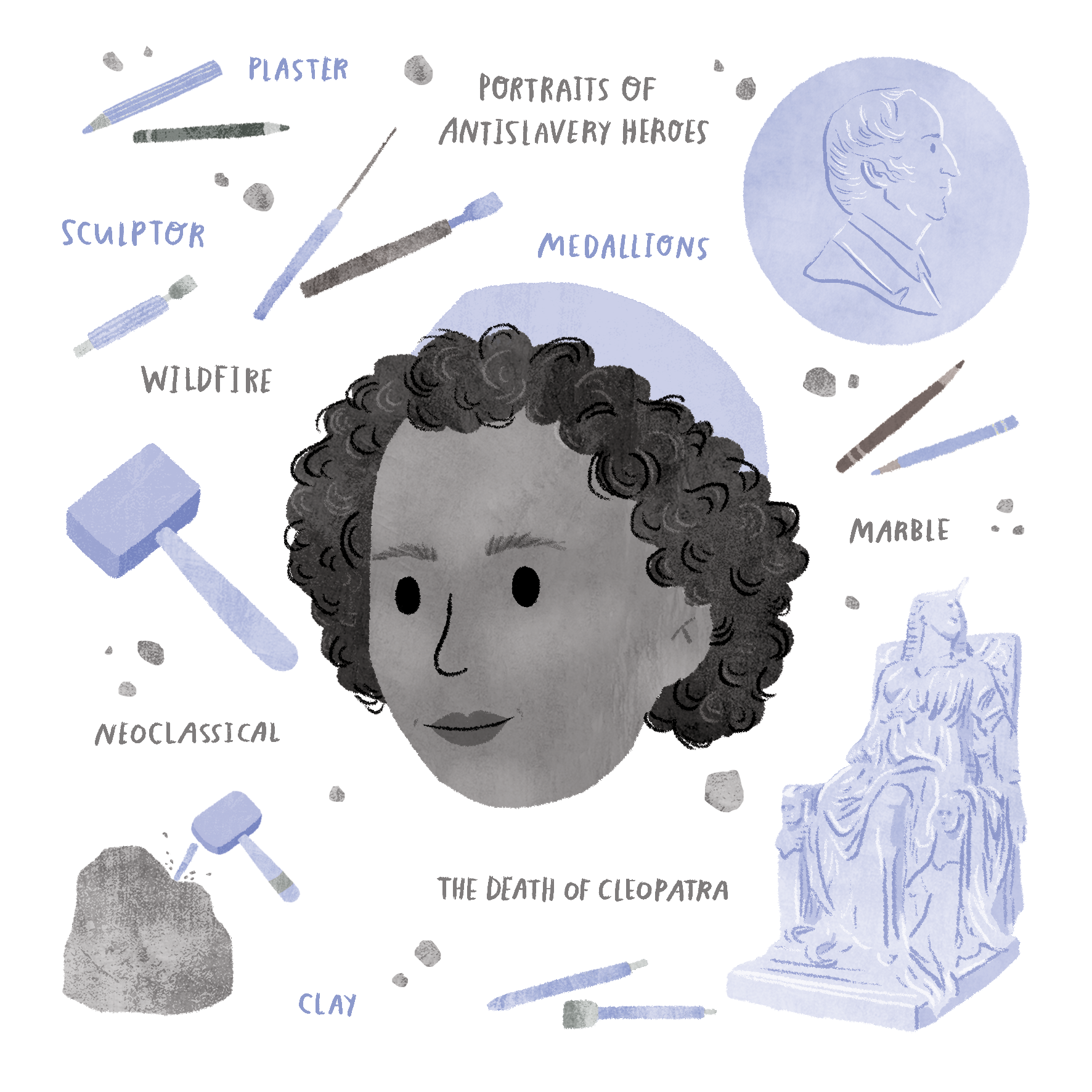
People in STEAM (science, tech, engineering, arts, and math) are blazing trails—both people from history and in the world today. We want more people to know about these people and their excellent but often under-promoted work, including children (and adults!) who might dream of careers in STEAM fields!
That is the goal of our new “living” Historic STEAM Heroes Lifeology card deck!
Each month, we feature a new person from history in this living digital card deck. These people often faced adversity and overcame obstacles to become the STEAM heroes that they are today! Have someone from history that you would like to nominate? Help us curate examples of historic steam heroes from around the world—not just Western culture. You can nominate here.
Keep reading to learn about the woman featured for the month of December!
Ruth Ella Moore is featured in our Historic STEAM Heroes course.
Ruth Ella Moore was a bacteriologist and microbiologist. She was the first Black woman to earn a Ph.D. in the natural sciences, but that was only the beginning of her glass-shattering career and life. Keep reading to learn more about this incredible STEAM Hero.
Ruth Ella Moore, Ph.D.
(May 19, 1903, Columbus, OH to July 19, 1994, Rockville, MD)
Moore was the third child, following two brothers, of William E. and Margaret Moore. Although there is little information about Moore’s childhood and her inspiration for pursuing bacteriology, her mother, a successful artist who graduated from Colombus State College of Art and Design, is said to have influenced Moore’s decision to pursue a degree in higher education.
In 1925, Moore received her bachelor’s degree and quickly completed a master’s degree in 1927—both at Ohio State University. By 1933, Moore had also earned a Ph.D. in bacteriology from the same university. Tuberculosis was of great public concern—one of the leading causes of death—while Moore was pursuing her doctoral education, and it had no cure at the time. Moore’s dissertation focused on the bacteriology of tuberculosis, which contributed to what we know today about the disease.
By 1940, Moore had secured a spot as a professor of bacteriology at Howard University’s medical school, which is where she remained until her retirement. She eventually became an associate professor and even chaired the bacteriology department. During her time as chair of the department, she spearheaded the name change of the department to the Department of Microbiology.
Moore’s research over the years had a lasting impact on the fields of bacteriology, microbiology, and immunology. In a 1938 paper, Moore described that certain bacteria were abundant in mouths with tooth decay and notably absent in mouths without. Therefore, she hypothesized that the bacteria caused cavities. Although this bacteria has since been studied further and discovered to be a result of cavities (not a cause), Moore’s contributions were a stepping stone to what we know today about tooth decay. Additionally, Moore studied blood grouping of individuals with different backgrounds, especially focusing on Black people and their differences from the rest of the population. She also studied the response of gut microorganisms like Salmonella and E.Coli to antibiotics.
Overcoming Obstacles
Not only did Moore live during a time of racial injustice—the Segregation Era—but she pursued and obtained advanced education, overcoming obstacles that stood in her way. At the time, Black people were not admitted to most of the universities in the country, and most of them most certainly did not hire Black faculty either. Despite this, Moore became the first Black woman to earn a Ph.D. in the natural sciences. She was also the first woman to head any department at Howard University. There is no record of Moore ever receiving tenure despite her substantial contributions to the field of microbiology as well as the university.
Moore was also the first Black person to join the American Society for Microbiology. According to Marian Johnson-Thompson as obtained by The Scientist, Moore faced hardship during her time as a member of the Society for Microbiology, especially when attending conferences in the south; Jim Crow laws made it difficult for Moore because Black members were not allowed to stay at the same hotels as the white members nor were they allowed to eat lunch on the premises of the conference with the others. After years and years of dedicated service to the organization, Moore was awarded a lifetime achievement award from the American Society for Microbiology Minority Committee in 1986.
Not Just a Scientist
Having a talented artist and seamstress as a mother, it is no surprise that Moore also picked up the skill. Moore’s mother taught her to sew when she was young, and as she grew up, she maintained a love for fashion. As a talented seamstress, Moore had several garments featured in The Sewer’s Art: Quality, Fashion and Economy, an exhibit at Ohio State University honoring four women, including Moore, and their garments from the 20th century.
Moore was also a phenomenal mentor and teacher. In 1952, she was awarded Teacher of the Year at Howard University. She also chaired the scholarship and loans committee as well as the student guidance committee, showcasing her service and mentorship to students and her community.
Read more about Ruth Moore:
Amsterdam News. Dr. Ruth Ella Moore, the First Black Female Natural Scientist. [Link]
EOScu. American Medical Hero: Dr. Ruth E. Moore. [Link].
The Microbial Menagerie. Meet Microbiologist Ruth Ella Moore, the First Black Woman to Earn a Ph.D. in the Natural Sciences. [Link]
The Ohio State University College of Public Health. Ruth Ella Moore Inducted into Office of Diversity and Inclusion Hall of Fame. [Link]
The Scientist. Leader of the Pack, 1903-1994. [Link]
Yale Molecular Biophysics and Biochemistry. Celebrating Black History Month – Ruth Ella Moore. [Link]






